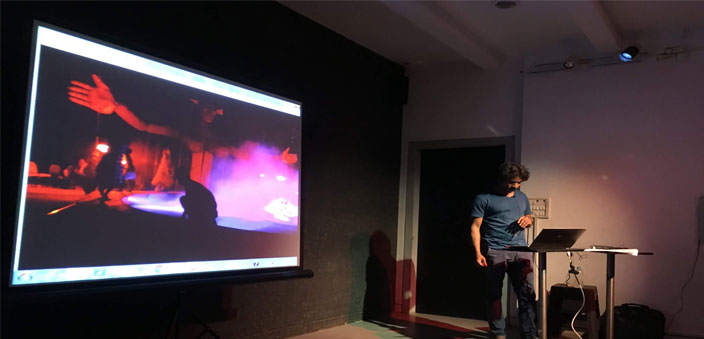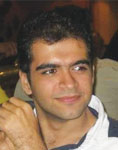What is cinema, what is theatre? How do we engage with it? How should it be conceived? are questions that puzzle. What is the root of cinema? Is it the language in which these films and scripts are produced? If one were to focus on this nation, about 1,600 films are produced in India every year. This makes India the number one producer of films in the whole world, and if one were to add the dimension of the number of plays produced in India, the number of television soaps, and the number of short films India produces, then that number can get pretty big. But the question isn’t about the number of stories that emerge through these various media, but it is of the languages they deal with. For somewhere they get branded in the language they get produced in.
The Indian Census of 1961 recognised 1,652 languages, however, the official count of these languages in India is 22. Nearly 150 of these languages are spoken by a sizeable number of people. India produces films in about 35 languages and only 17% of these films are in Hindi, Tamil, Telugu, and Malayalam. These numbers talk about the diversity of language in India. No other country in the world produces its film and theatre in such a diverse spectrum of languages. That gives India a very unique locus on the cinema and art spectrum of the world. This is because what makes the work so attractively diverse, also makes small pockets of audiences in a rather large nation. Of course, there is seminal work that transcends the border of language and appeals to other audiences who don’t necessarily speak the language, but this work is far and few. For, most of the film and theatre centres on a community and the language that they speak, thus making it focussed on that community’s story, their tastes, their lives and their hopes.
The origin of language
The language origin story is a discourse in itself, and the branch of linguistics deals with it. Noted thinkers of the world have put their mind into wondering where did language first begin. Among them Noam Chomsky suggests that language developed due to a mutation after a cosmic ray shower implanting a language organ in an otherwise primate brain. But irrelevant of how language began, one thing is for certain, language is here to stay and will remain to be one of the primary tools with which human evolution will continue. It will be a method to communicate ideas, write history, make scientific discoveries, and also to tell stories. Hence, the complex nature of the languages that come from India make a rich study of the progression of the spread of language, and its evolution.
But is script the primary tool with which a work can be made meaningful? Or to reiterate, is the spoken or written word the primary language that humans possess? Perhaps history disagrees. Before the advent of the talkies, silent films were the only modes to engage with cinema, and they relied on the human body to convey ideas and thoughts that were embedded in movement, and expression. Charlie Chaplin’s brand of comedy was representative of a language that did not depend on words being spoken. The question that begs being answered here is that does the freeing of a movie or play from a particular language make it a more universal entity? The language of gesture, of expression and of the human body doesn’t need any particular dialect for it to be communicated, does it? Of course, it does need the skill of an actor, and that of the camera, but doesn’t it become a more understandable entity to anyone who watches it, no matter what language she speaks, or what country she comes from.
Theatre as an entity
As far as theatre is concerned, a recent talk by thespian Deepan Sivaraman titled ‘Post dramatic turn in Indian theatre’ brought into light the way theatre has evolved over the ages. He mentioned how the written word in theatre was given a huge amount of importance at one time because theatre as a medium is so ephemeral. Cinema may be able to last because it has a record of its existence. But theatre lasts only during the run time of the show. That same play will never be produced again. Any repeat performance will be a fresh journey for the actors, and the show will have a new meaning all over again. The only way theatre could survive is through its script, and hence the playwrights gained such popularity, because their scripts and the words written in them were the only record of the performance to remember it by. But people don’t go to the theatre to hear the script, they go to the theatre to engage with the image and the words embedded in those images. But what if the words were removed? What if spoken word altogether disappears. The works by Romeo Castelucci, Tadeusz Kantor, Jerzy Grotowski, and Oskar Schlemmer showcase the fact that languages can be engaged with in different ways.

In the Theatre of death, Tadeusz Kantor engaged with a different language of theatre. In this, death played a predominant part and most of the scenes involved people long dead and gone. The objects Kantor used in these productions had a language of their own. In fact, the objects Kantor used in his productions still survive in the centre of the documentation of the art of Tadeusz Kantor in Krakow. What was the language of Kantor’s theatre, for it yet survives to this day and age, and people engage with it in the museum where it stands. Deepan’s talk extended into a workshop titled ‘Towards the language of theatre of scenography’, which dealt with the ideas that give prominence to the moving image and elements in the scene itself. Scenography brought up some quintessential questions. The images, the objects, the active involvement of every motif in the space, and explorations that many theatre makers have to deal with. The images are a language in itself, and possibly scenography is very poor art form because it borrows words, thoughts, ideas from various languages that already exist, thus making a hybrid vocabulary in space. The reading of this language depends on an intelligent mind, which makes meaning from it.
Space, empty or occupied is meaningful through the utilisation of this language, and a lot can be said through images, its complexity can be layered through science, fine art, architecture, and a host of other vocabularies of space that exist. Just the sight of something that occupies a space is a meaning making mechanism. This complex language is seen in some ways by everyone who ever engaged with film. Some images make a mark on the gaze. Hence the primacy of the language of film or theatre perhaps in its immediacy deals with its scenography, and that is where any piece of work frees itself from being contained by boundaries.
Does that mean that works should free themselves from scripts as such? The answer to that is ‘No’, for script driven theatre and script driven cinema is a style and form of cinema which exists, and will exist for a long, long time. But embedded in it is the language of the scene that can never be taken away from it. The scenography of design, of costume, of art installations, and of objects, is a metaphorical realisation of the visual world in which the piece is set. But this language needs to be explored with more intent.


 [/column]
[/column]